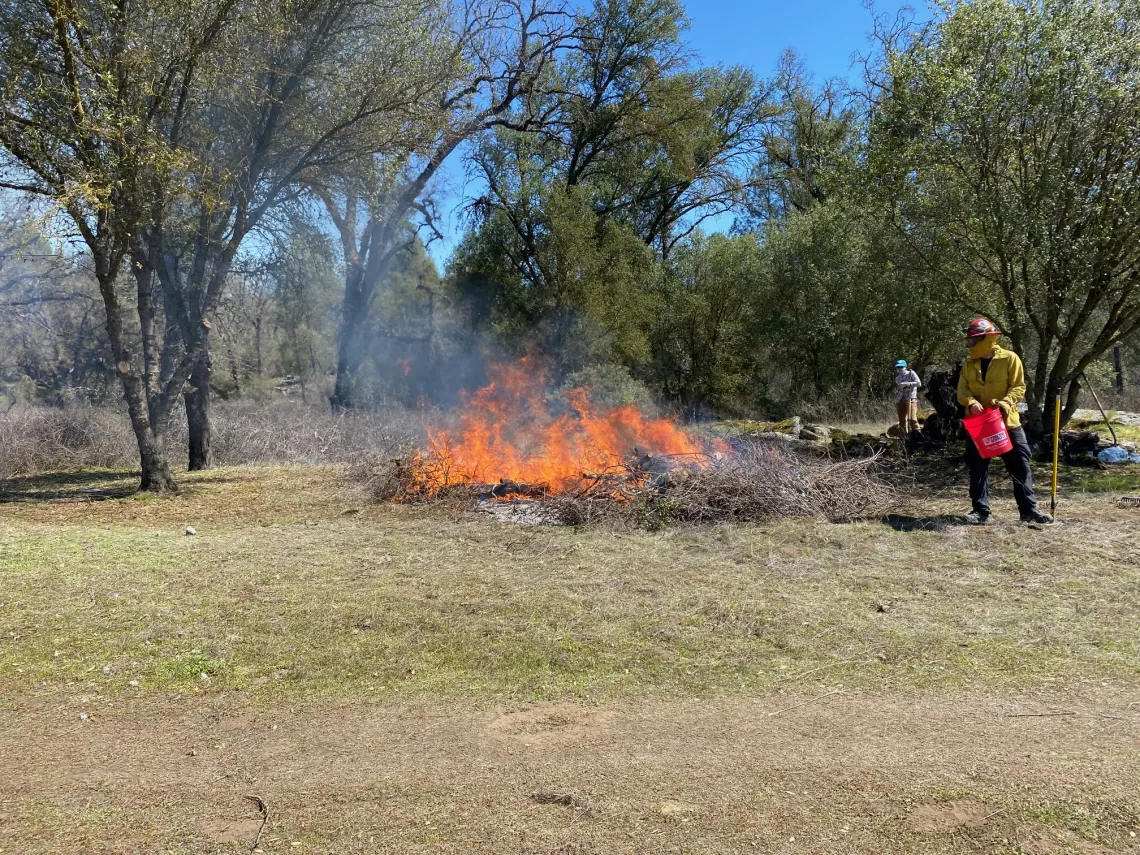Southwest CASC Funds Four New Projects

Carolyn Enquist (USGS)
The Southwest Climate Adaptation Science Center (SW CASC) is excited to be working with new Tribal partners on projects that draw upon the application of traditional methods of ecosystem restoration and natural resource management. From determining the landscape management practices that protect a Pueblo against wildfire-related impacts, to mapping riparian vegetation response to climate change in a local watershed, the SW CASC is funding four new projects that will build climate resilience in Tribal communities.
The descriptions for each project are below:
Northern California Tribal Climate Adaptation and Science Integration Research Project
This project is a research collaboration between Dry Creek Rancheria, the California Indian Environmental Alliance (CIEA) and the following key Tribal partners: Amah-Mutsun Tribe/Land Trust, Bear River Band of Rohnerville Rancheria, Blue Lake Rancheria Tribe of California, Kashia Band of Pomo Indians of Stewarts Point Rancheria, and Robinson Rancheria of Pomo Indians. The project will establish and convene the Northern California Tribal Consortium for Climate Resiliency (NCCTCR) to develop a Tribal Science Climate Resiliency Framework for California that supports actionable science by deriving “Tribally specific” adaptation planning and resource management priorities and fills data gaps to predict and plan for change across the region. The project will evaluate climate models and resiliency planning tools, identify Tribal traditional management objectives for ecosystem restoration at regional and watershed levels and provide actionable recommendations to inform state climate adaptation planning.
Link: https://www.sciencebase.gov/catalog/item/614ce221d34e0df5fb986954
Landscape Management Practices on the Pueblo de San Ildefonso
The Pueblo de San Ildefonso is facing increased wildfire risk under climate change. Wildfire can burn important cultural sites and result in flooding and erosion, which exposes Pueblo members to contaminated soils and sediments that are transported from the adjacent Los Alamos National Laboratory. Working closely with members of the Pueblo and other partners, this project will develop a study plan focused on which landscape management practices best protect the Pueblo against the wildfire-related impacts they care about most.
Link: https://www.sciencebase.gov/catalog/item/614ce220d34e0df5fb986952
Mapping Riparian Vegetation Response to Climate Change on the San Carlos Apache Reservation and Upper Gila River Watershed to Inform Restoration Priorities: 1935 to Present
Riparian areas within the San Carlos Apache Reservation provide significant cultural and natural values but are at risk of degradation resulting from changes in climate and land use. This proposal describes the analysis of riparian vegetation in the Upper Gila River Watershed that drains to the Reservation, using aerial and satellite imagery over an 84-year timeframe, and documents the relationship to changes in temperature and precipitation. Results from the change detection and climate catalysts will be used to help develop a riparian restoration plan by prioritizing restoration efforts in the context of climate adaptation and the traditional ecological knowledge of the San Carlos Apache Tribe.
Link: https://www.sciencebase.gov/catalog/item/614ce204d34e0df5fb986940
Monitoring and Adaptation to Conserve Clear Lake Cultural Keystone Species
Big Valley Rancheria's Tribal Environmental Protection Agency office serves as a site for monitoring studies on Clear Lake relating to climate change impacts on water quality and culturally significant species including the tule bulrush and the Clear Lake hitch. This proposal “connects the dots” between climate change impacts (such as increasing water temperatures, lengthier droughts, more extreme and frequent wildfires) and climate change-exacerbated conditions (such as harmful algal blooms and erosion) through lake water, vegetation, and fish monitoring.
Link: https://www.sciencebase.gov/catalog/item/614ce222d34e0df5fb98695a

